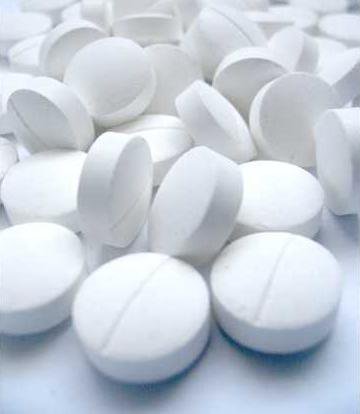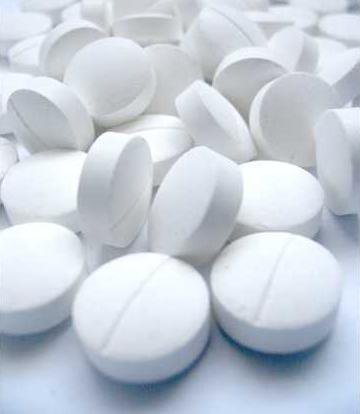Once children become teenagers, they begin figuring out who they are. That process involves a lot of experimentation, from trying out things as innocent as new music and different hairstyles to dangerous behavior such as experimenting with drugs.
Many teenagers will try alcohol and marijuana during their high school years. According to a National Institute on Alcohol Abuse and Alcoholism survey, 35.1 percent of 15-year-olds report that theyve tried alcohol at least once, and according to a University of Michigan survey, 12 percent of eighth-graders and 35 percent of 12th-graders have used marijuana in the past year.
A sizable portion of the children that try alcohol, marijuana and other drugs develop serious substance abuse problems. In fact, that same UM survey found that close to 5 percent of 12th-graders have abused the prescription opiate Vicodin within the past year, and 2.6 percent used cocaine during that same time frame.
Do you suspect that your teen may be experimenting with drugs? Are you worried about a possible drug addiction? This is a very difficult situation for anyone to be in, especially a parent. Read along to find out how you can provide them with the help they need to combat the problem.
Confrontation
It is true that you cant help those who wont help themselves. It begins with acknowledging the problem. Once you have come to terms with this, it is important to get your teenager to realize he or she has a problem.
This situation is emotional for all involved. But you must remain calm and level-headed when you confront your child. The focus should be on their rehabilitation and not about punishment. The tone should be concerned, not angry. If you come at them angrily, theyll likely get defensive.
For treatment to be truly effective, they need to want it as much as you do.
Treatment
There are a variety of treatments that can be used to address your teens struggles with addiction.
Teens respond to specific treatments differently, and what works best for one teenager may not be very effective for another. A rehabilitation center provides a variety of treatment options in order to effectively serve as many unique patients as much as possible. Options include group counseling, one-on-one counseling, family therapy, art therapy, life coaching, relapse prevention and more.
Addiction specialists review each patient as an individual to determine which approach will work best. For example, Type-A patients often thrive in a group counseling setting where they share their experiences and learn from one another. On the other hand, Type-B patients often make more progress working alone with a counselor in one-on-one sessions.
Follow-through
Just because your teen has completed a rehabilitation program doesn't mean your teen has completely overcome the addiction. Its important for them to maintain a healthy diet, exercise regularly and engage in activities and hobbies after treatment.
Usually, theres a root issue that drives substance abuse tendencies such as low self-esteem, body issues, past trauma, etc. Outpatient therapy can be used to address those root issues and prevent your teen from sliding back into bad habits.
Remember to take it slow. Recovery from addiction is a slow process. Be patient with your child, communicate through the process, and remember that there is always hope for recovery.
Many teenagers will try alcohol and marijuana during their high school years. According to a National Institute on Alcohol Abuse and Alcoholism survey, 35.1 percent of 15-year-olds report that theyve tried alcohol at least once, and according to a University of Michigan survey, 12 percent of eighth-graders and 35 percent of 12th-graders have used marijuana in the past year.
A sizable portion of the children that try alcohol, marijuana and other drugs develop serious substance abuse problems. In fact, that same UM survey found that close to 5 percent of 12th-graders have abused the prescription opiate Vicodin within the past year, and 2.6 percent used cocaine during that same time frame.
Do you suspect that your teen may be experimenting with drugs? Are you worried about a possible drug addiction? This is a very difficult situation for anyone to be in, especially a parent. Read along to find out how you can provide them with the help they need to combat the problem.
Confrontation
It is true that you cant help those who wont help themselves. It begins with acknowledging the problem. Once you have come to terms with this, it is important to get your teenager to realize he or she has a problem.
This situation is emotional for all involved. But you must remain calm and level-headed when you confront your child. The focus should be on their rehabilitation and not about punishment. The tone should be concerned, not angry. If you come at them angrily, theyll likely get defensive.
For treatment to be truly effective, they need to want it as much as you do.
Treatment
There are a variety of treatments that can be used to address your teens struggles with addiction.
Teens respond to specific treatments differently, and what works best for one teenager may not be very effective for another. A rehabilitation center provides a variety of treatment options in order to effectively serve as many unique patients as much as possible. Options include group counseling, one-on-one counseling, family therapy, art therapy, life coaching, relapse prevention and more.
Addiction specialists review each patient as an individual to determine which approach will work best. For example, Type-A patients often thrive in a group counseling setting where they share their experiences and learn from one another. On the other hand, Type-B patients often make more progress working alone with a counselor in one-on-one sessions.
Follow-through
Just because your teen has completed a rehabilitation program doesn't mean your teen has completely overcome the addiction. Its important for them to maintain a healthy diet, exercise regularly and engage in activities and hobbies after treatment.
Usually, theres a root issue that drives substance abuse tendencies such as low self-esteem, body issues, past trauma, etc. Outpatient therapy can be used to address those root issues and prevent your teen from sliding back into bad habits.
Remember to take it slow. Recovery from addiction is a slow process. Be patient with your child, communicate through the process, and remember that there is always hope for recovery.








